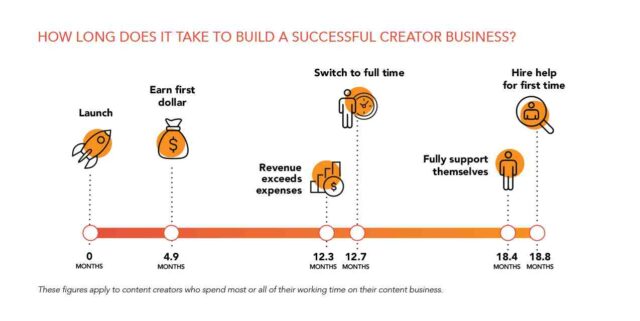
The Marathon
I’m writing this three days after my first (running) marathon. My legs are sore, but I honestly feel pretty good. The result? I surprised myself. I finished the marathon with a chip time of 4 hours 15 minutes and 40 seconds.
I also hit my goal of not walking once. I took water every mile and a gel at every four miles.
One of the biggest tips I received was to smile a lot. I was smiling all the time, all the way to the finish line. And wow does that make things better. Thank you, Ruth Carter, for that piece of advice.
When I came through the finish line the actual time was 4 hours 20 minutes…both my kids had a chuckle about the whole 4:20 thing. I stepped on the finish line and looked down so I could see my foot cross the line…thus completing the journey.
I can close my eyes and see my foot over the line…the culmination of months of work (and 400 miles to be precise).
So…that’s that, but what I want to tell you about is a conversation I had the day before with my wife. I must tread lightly here because she already thinks I talk about her too much in my content, but I think she’s been with me long enough. She’s pretty much stuck with me.
Here goes…
We are in Toledo sitting inside a Whole Foods. She was having a beer and I was drinking an Arnold Palmer with some Popcorn. Good combination by the way.
I was just talking to her about my marathon thoughts. I was a bit jumpy. Anxious about the next day. She asked me if I had a time goal. I told her that all the advice I received was not to have a time goal. Just finish. Finishing is enough.
I sensed she wanted to say something. Her complexion changed a bit, then she laid it on me.
In so many words, she said that wasn’t good enough. That I’d done the work, to a tee I’d done the work. I skipped two runs because of injury over the past four months, but other than that I hit every run. I ran in the Bahamas. I got up early to run on our family vacation. I ran 60 laps around a cruise ship…two times mind you. I ran 22 miles around the west side of London, England.
Then she asks, “don’t you have a time goal? Are you a Pulizzi?”
Now, when she brings out the “Are you a Pulizzi?” that always gets my attention. We are ‘go big or go home’ people. She was challenging me. I decided to do this thing…and made the decision to do one, just one marathon. And since I was making this decision, how was I not going to go all out?
I was mad. More than mad, I was pissed. Then I started to rationalize. I showed her my splits for my other training runs. My fastest mile splits, for any my runs, were around nine minutes 30 seconds. My runs over 15 miles were around 10:30 to 11’s or higher. I said, how could I run much faster than a 4:30 when nothing I’ve done showed me I could do that?
4:15 was the number she thought I could do. I ran my last half marathon in 2:07, so she said just double that. “You should just do that,” she said. I told her it wasn’t that easy.
Then we went to dinner, got to sleep early and then I stayed awake for awhile thinking (stewing might be the better word). I was obsessed over what she said. Was I settling? Was I just taking the advice of others because that’s the way most people did it.
The race the next day was to start at 6:30 AM. Around 5:30 AM I had some alone time, to drink my coffee and stretch, and I made the decision to go all out. I would start the first mile at a nice pace, around 10…then work to get a little faster for each mile until about halfway, and then hold on for dear life.
Mile one I did in 9:58. Perfect start.
At mile eight I hit a 9:04 split.
I hit my lowest split at mile nine with an 8:55.
I kept on with all my miles under 10 minutes until mile 22 and hit the proverbial wall. The next five miles were 10:21, 10:12, 10:31, 10:26 and 10:19 and then I came around the corner, the last .2 miles, with a big smile on my face.
I’m not sure what the learning is here…but I think it’s a mixture of:
It’s okay to take advice, but turn all that advice into your own decision AND actually make it your own, and
We only live once, so whatever you decide to do, give it everything you’ve got.
I’m sure if I came in at 4:29 I would be happy that I finished my first marathon, but I couldn’t honestly say that I gave everything physically and mentally to a task.
For the marathon on April 23rd in Toledo, I gave absolutely everything I had.
After the race, I was walking back, hand in hand with my wife. She was smiling because she knew. And I thanked her. I told her I was mad at her, and I thanked her for what she said because it was right. She said that’s why we are perfect for each other. “You challenge me as well. We are supposed to make each other better.”
As a final note, I want to thank Jim McPhillips for riding his bike along with me at the race. He was there whenever I needed anything…especially water, and a joke or two. Also a big thanks to JK Kalinowski, who shared this goal with me. I can’t tell you how many texts we sent back and forth supporting each other.
And to the hundreds of others (many of you) who sent me emails, messages and voicemails. It all meant so much. Thank you!
The Anatomy of a Creator
This week The Tilt released their 3rd annual study of the creator economy. You can check out the full research here.
My opening keynote at CEX unpacked some of this research. Here are the findings I found the most interesting.
Independence+
Most content entrepreneurs don’t aim to build big, flashy media businesses with an audience of millions. They seek independence, fewer work hours, and the freedom to pursue projects that inspire them.
Sure, money is important, but quality of life trumps all. The average creator works about 36 hours a week, with a preference to work less than 30.
Quality over Quantity
The research shows that most content entrepreneurs have relatively small audiences. People who run their content businesses as a full-time endeavor have an average of 4,000 followers across all channels. For most, it’s not the size of the audience, but how deeply engaged they are with the content.
In addition, content entrepreneurs use just four channels to create and distribute content (on average), with just two bringing in the majority of the revenue.

How Long to Make It?
From launch of the business to first dollar takes approximately five months. In just over a year, revenue exceeds expenses. That’s about the time when a part-time hobbyist decides to switch to full time. At around a year-and-a-half, the content entrepreneur should be close to supporting themselves fully.
By any comparison, this is extremely quick to build a viable business. Why? Building a content-first business can be done with minimal costs. The average content business needs around $10,000 to launch and generally has a few thousand in tech and software costs per month. It is, perhaps, the easiest business on the planet to start (needing just a simple smartphone to begin creating and distributing content).
What Should You Expect?
In an average of all responses, content entrepreneurs expect gross revenues of $108,000 in 2023 with $62,000 in profit. That’s a 59 percent margin.
While this doesn’t happen in year one, or even year two, many content entrepreneurs are seeing these kinds of numbers and better after three-plus years.
How Do They Make Money?
Content entrepreneurs make money in dozens of ways. Almost half leverage consulting and coaching services, followed by book sales, online courses and workshops, affiliate marketing deals and advertising.
And Finally, It’s Not All Content
Many entrepreneurs get into the content business thinking it’s all about creating content, building an audience and then monetizing that audience. Not true.
While 46 percent of the time is spent on content creation, 17 percent is content distribution and another 29 percent is marketing, sales, promotion, business and operational time.
This is where so many content entrepreneurs fail. Yes, this is a content business, but it’s a business first.
